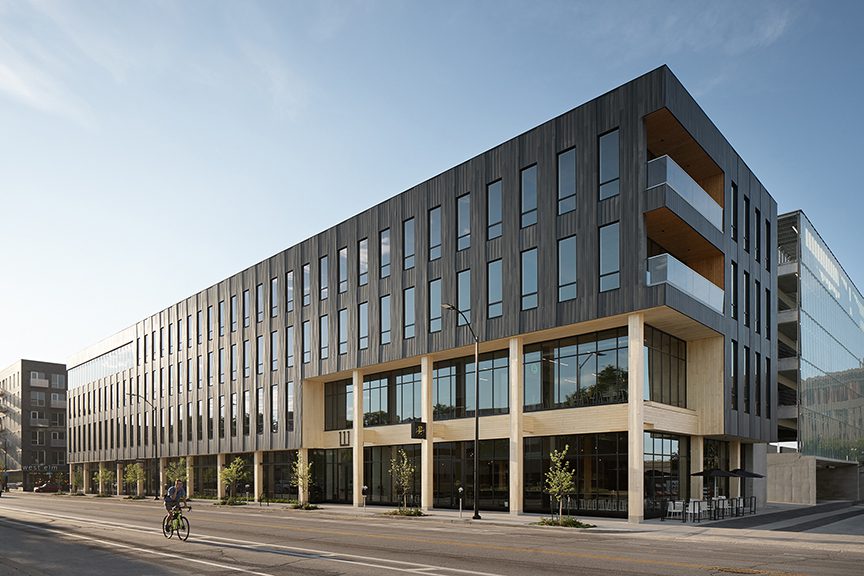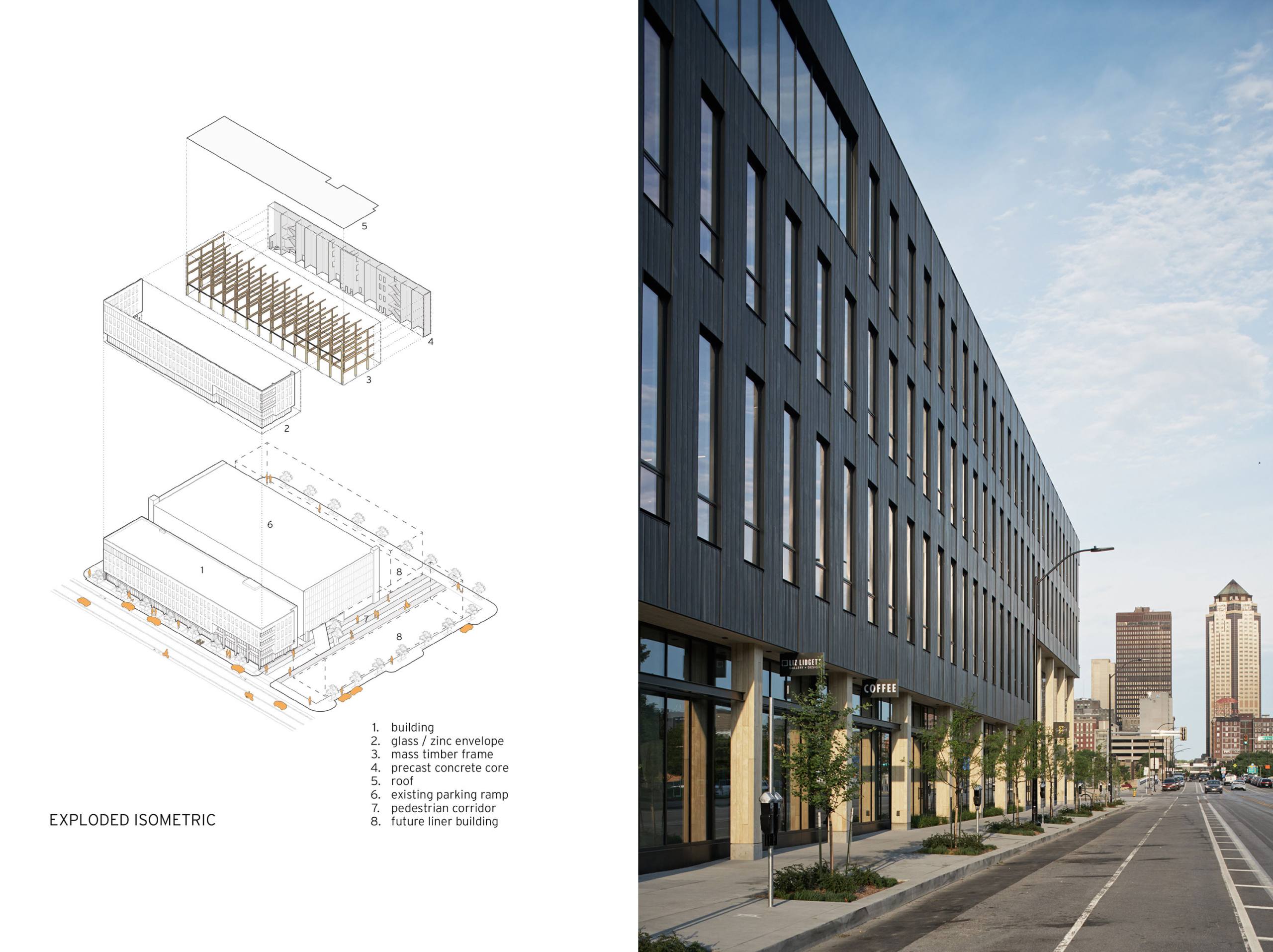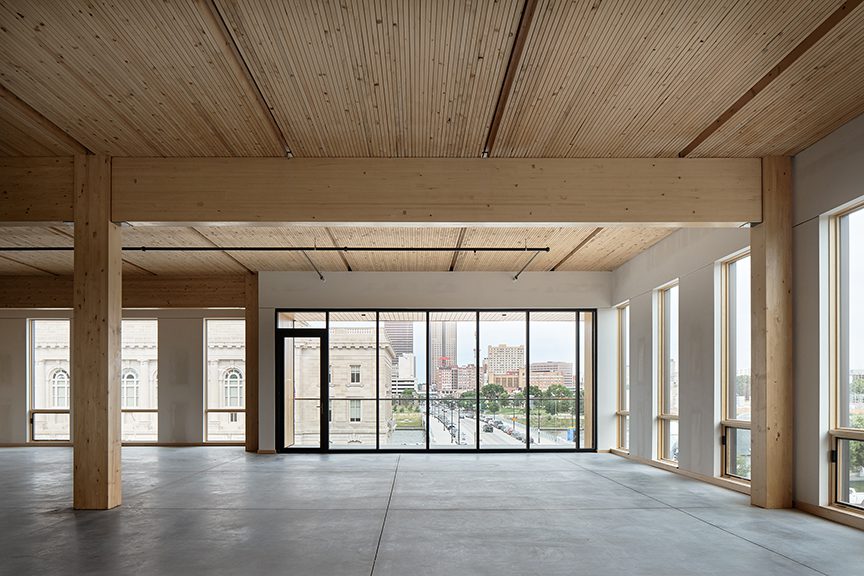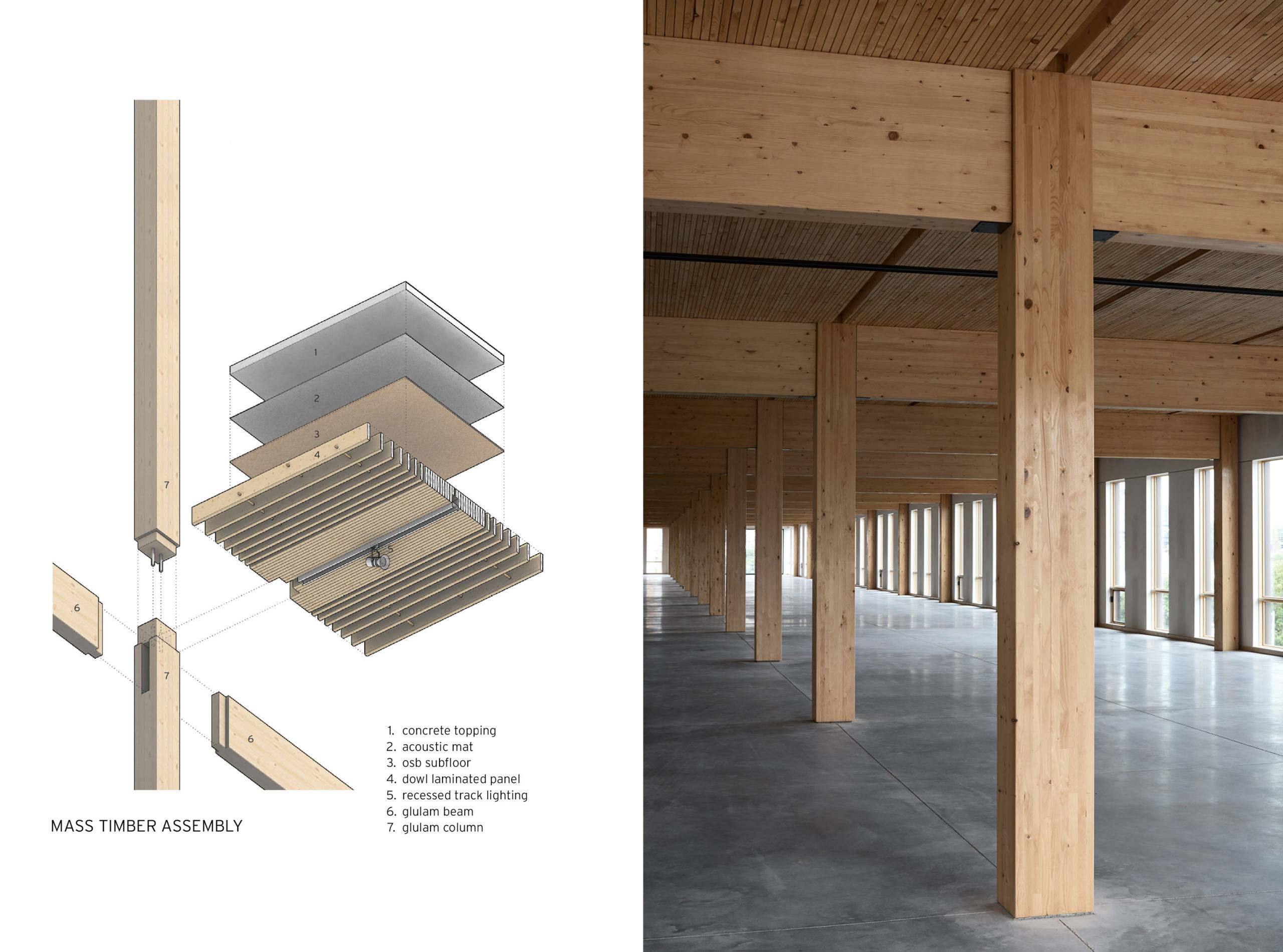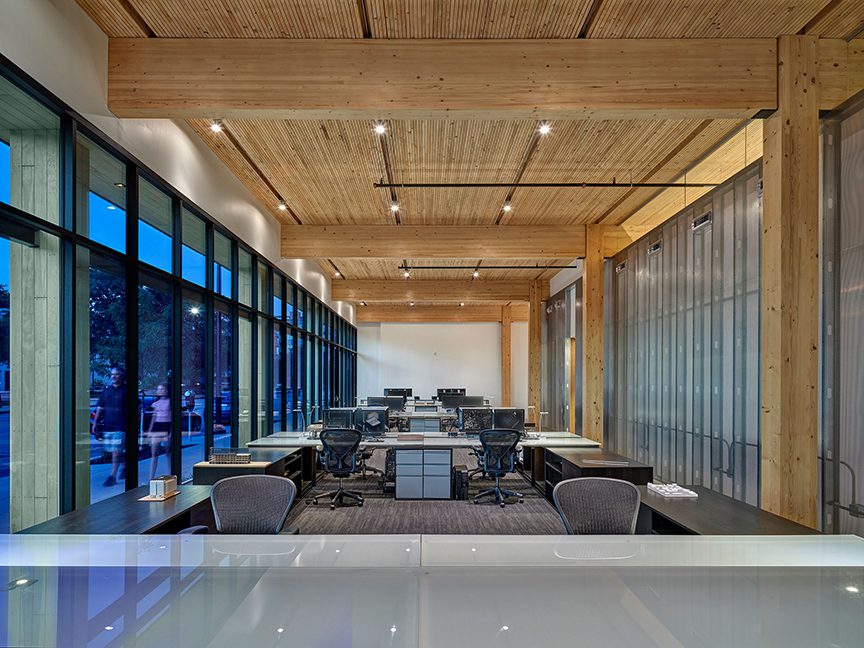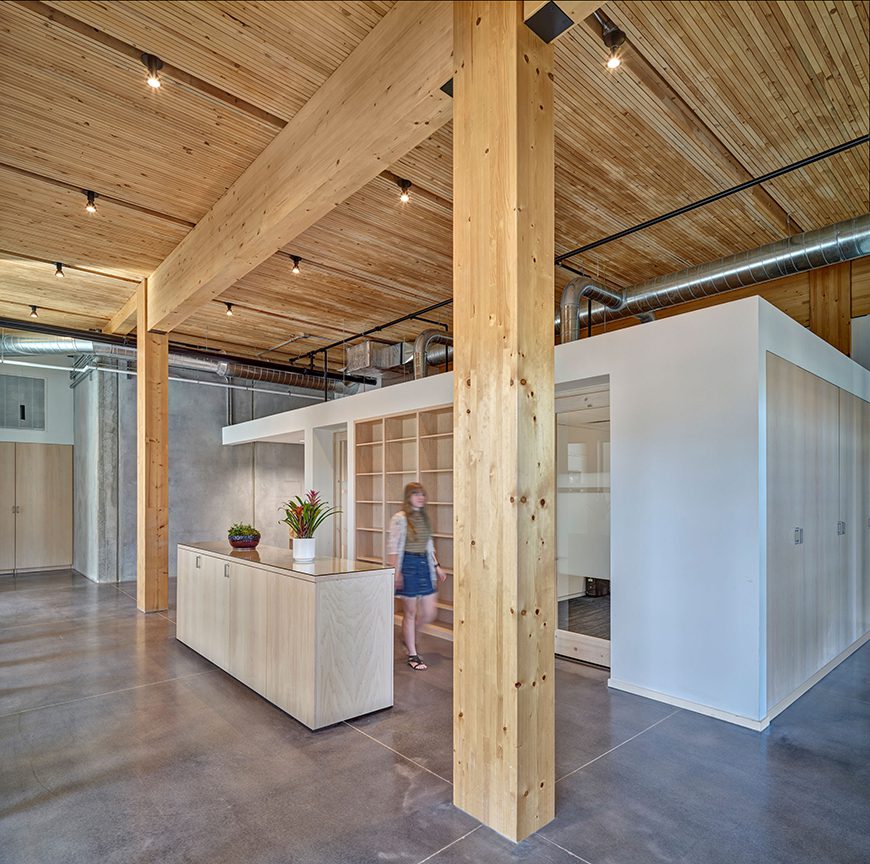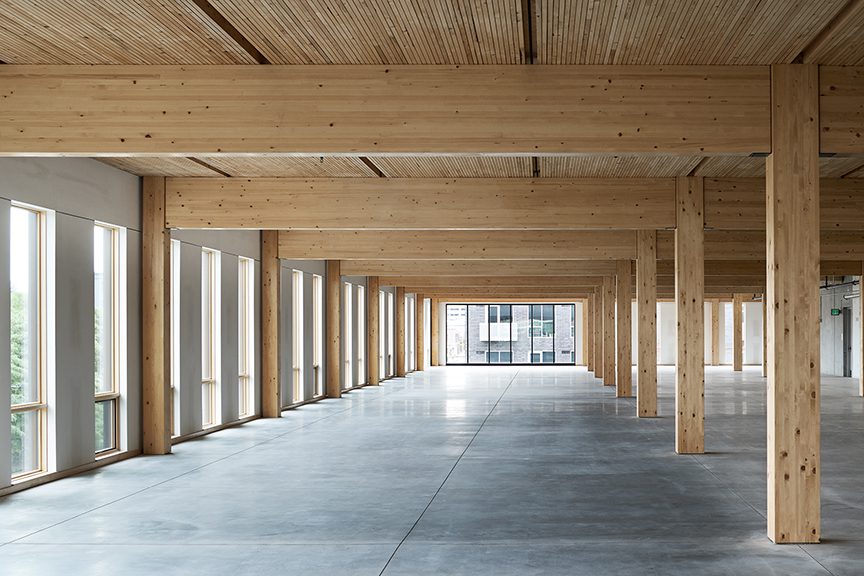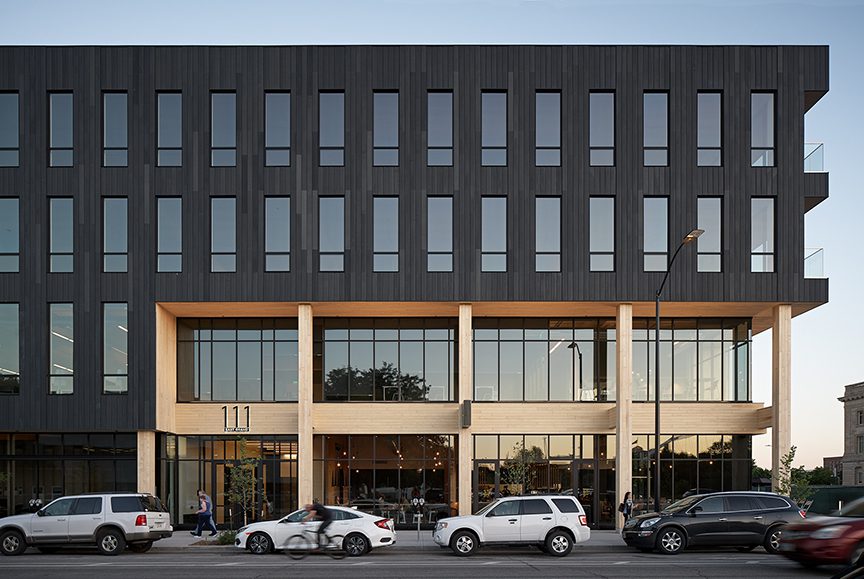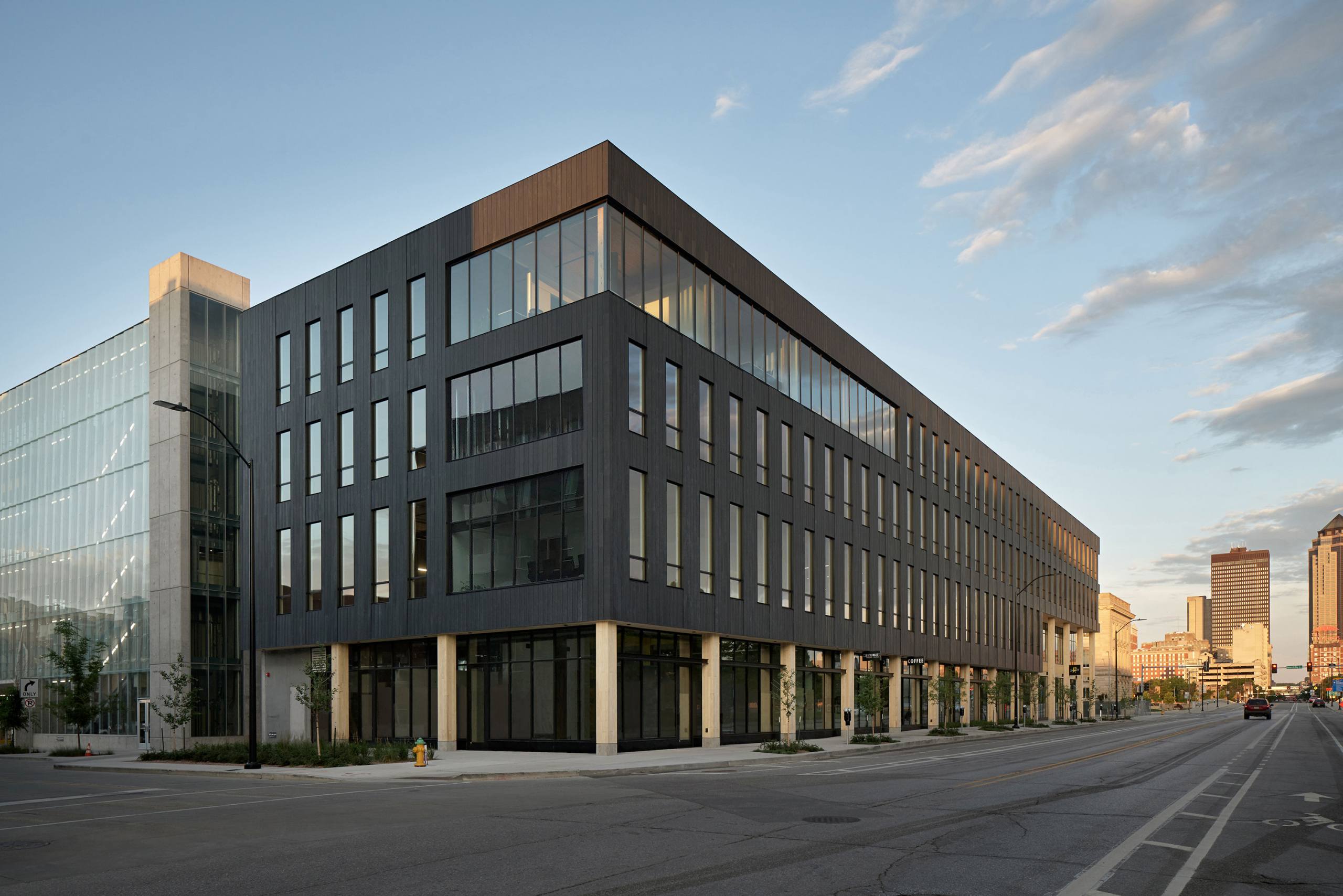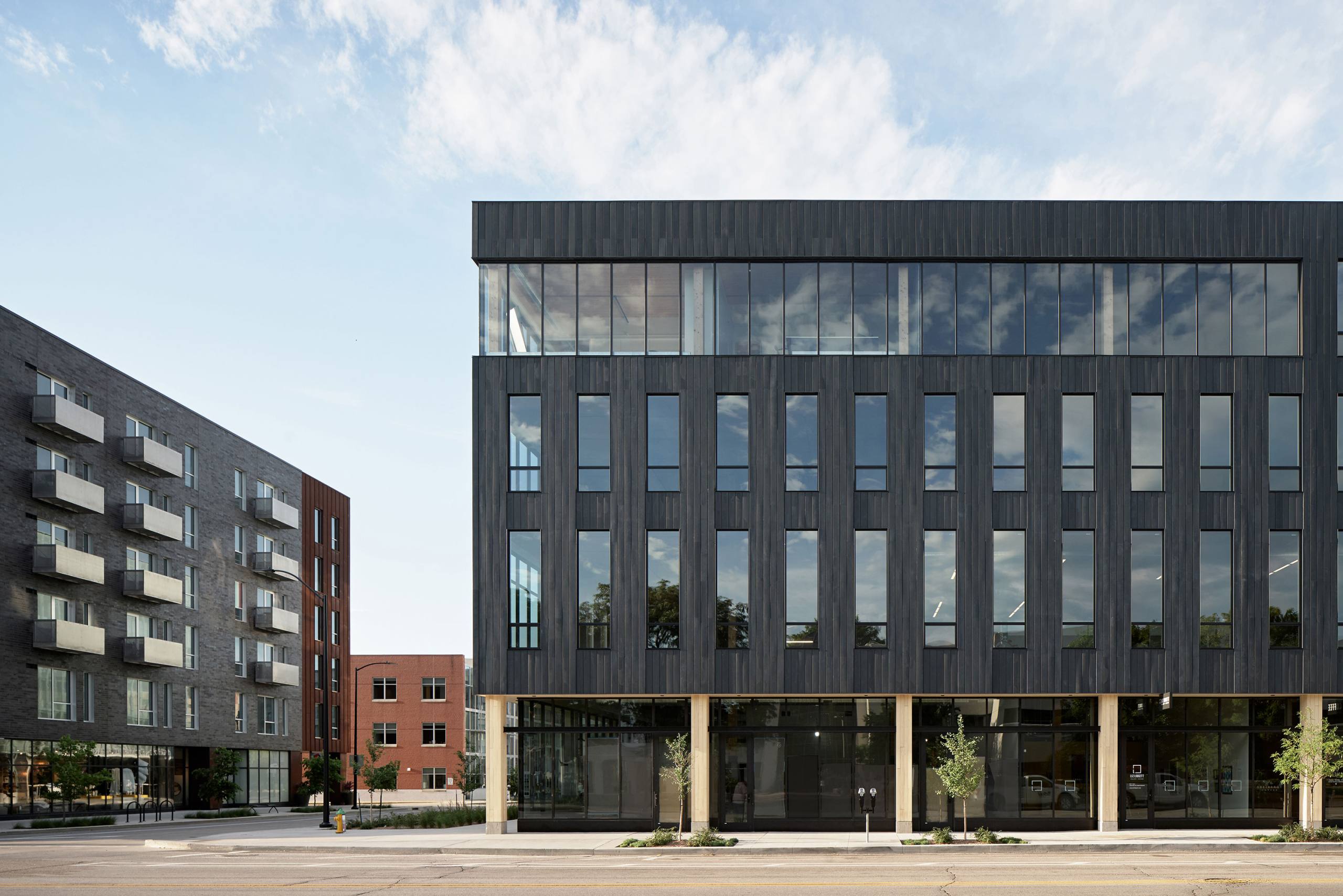111 East Grand Avenue/
Neumann Monson Architects
Project Details

Location(City/Country):
Des Moines, Iowa / United States
Tipology:
Commercial Offices
Year (Design/Construction):
- / 2019
Area (Net/Gross):
6038.69 m2 / -
Operational Carbon emissions (B6) kgCO2e/m2/y:
-
Embodied Carbon emissions (A1-A3) kgCO2e/m2:
-- Regular Timber Frame Structure. Glulam beams and columns.
- DLT (Dowel Dowel Laminated) to form the floor and roof decks, with a concrete topping. DLT application reduces the need for glue and drastically decreases off-gassing upon fabrication and it’s also an ideal solution from a Circular Economy perspective.
- Timber elements are left exposed minimasing the number of layers required.
- Efficient design, fabrication and installation reduced the construction programme.
- The Glass / Solid Façade ratio helps to mitigate solar gain and heat loss through the façade of the building, reducing the Operational Carbon emissions during the life span of the building.
Des Moines’ East Village is on an upswing. Urban infill and adaptive reuse have revitalized the district with apartments, retail options, and office spaces. 111 East Grand is the latest addition to the area, and the first Dowel Laminated Timber (DLT) office building in the United States. The 4-story structure locates three floors of commercial office space over street level retail.
The design team had considered mass timber prior to 111 East Grand however cost had always been the primary unknown to pursue the option in comparison to traditional construction. An established relationship with a development team on previous projects presented the opportunity to utilize mass timber as a viable option. Given the surrounding revitalized building stock, timber seemed like the right material for conscientious ground-up construction.
We made sure to substantiate mass timber’s potential when we suggested its use. The team visited Minneapolis’ T3 office building to get a grasp on timber’s spatial qualities and we facilitated a cost/benefit review for the owners to assess the value of providing ‘something special.’ After interviews with various suppliers, the team decided to pursue DLT. The timber supplier we selected had already made a substantial capital investment into the technology, allaying owners’ concerns about risk.
DLT is manufactured by hydraulically inserting hardwood dowels into softwood dimensional lumber. The hardwood expands upon reaching moisture equilibrium and creates a friction bond with the softwood. This application greatly reduces the need for glue and drastically decreases off-gassing upon fabrication.
111 East Grand’s mass timber strategy is a hybrid system. It relies on a precast concrete service core to house the stairs, elevators, mechanical, and utility shafts. Spruce glulam beams and columns frame the 40’-0” x 6’-8” DLT panels that serve as floor and roof decks. Each DLT panel was fabricated with shallower boards at its edges to create chases for housing electrical conduits, a unique design touch.
Off-site fabrication paid off during construction by shaving time off the schedule, minimizing disturbance to the neighborhood, and necessitating a smaller crew size. The supplier shipped the kit-of-parts in trucks timed to an installation sequence, arriving ready for its cargo to be lifted into place. An acoustical membrane and a concrete topping were applied atop the panels once in place. The concrete topping was increased from 3” to 3 ½” to achieve the necessary 1 hr. fire rating between levels 1 and 2, due to the change in occupancy.
Mass timber’s lasting benefits, including carbon sequestration and biophilia, contribute to occupant health and provide a sustainable long-term work environment. 1,180 cubic meters of timber was used throughout the building structure. That’s 284 tons of sequestered carbon and 1,042 tons of sequestered CO2. The wood’s refined aesthetics enable it to remain exposed as an interior finish that enriches occupants’ visual, tactile, and olfactive experience. Tenant improvement work like drop ceilings and wrapped columns has been minimized.
On the exterior, natural Accoya wood soffits and columns hint at the material used for the structure and complement the exposed wood interior.
- Architect: Neumann Monson Architects, IA
- Structural Engineer: Engineer of Record for Timber Superstructure: StructureCraft, Abbotsford, BC, Canada
- Base Building Engineer: Raker Rhodes Engineering, Des Moines, IA
- General Contractor: Ryan Companies, Des Moines, IA
- Photography: * Mike Sinclair, Kansas City, MO * Cameron Campbell Integrated Studio, Ames, IA
